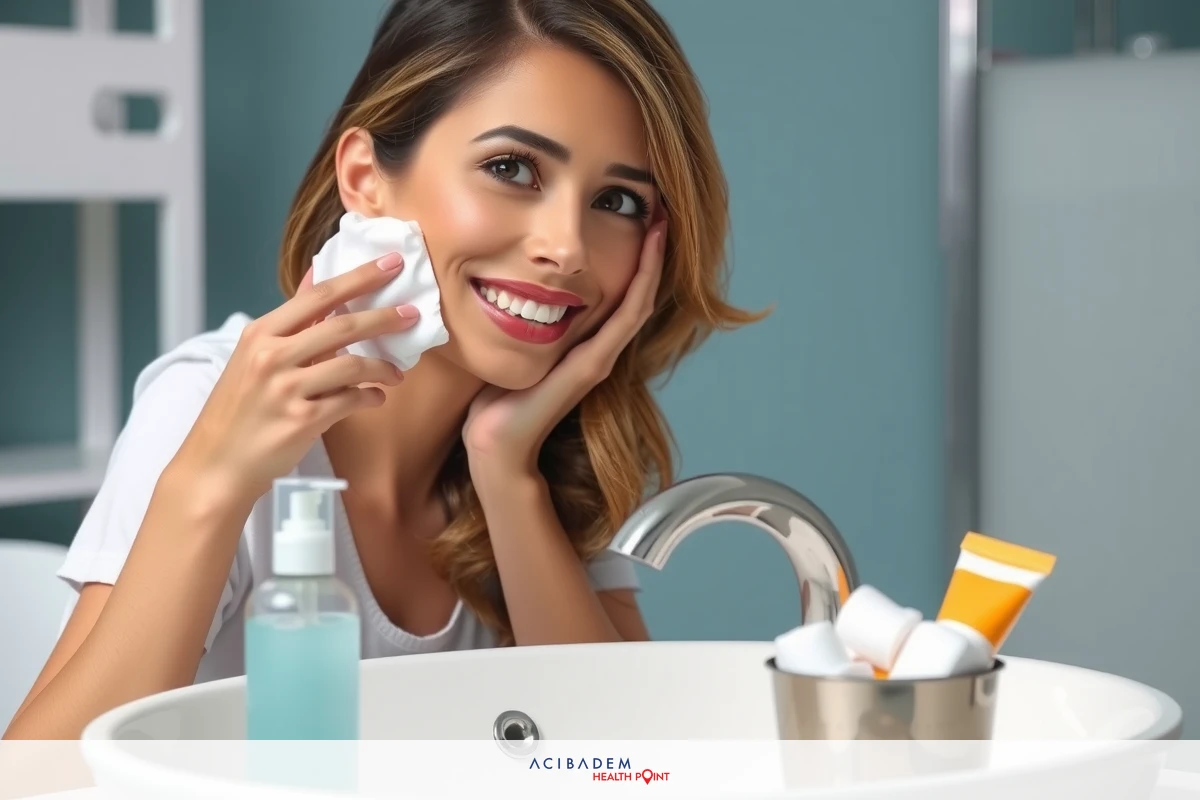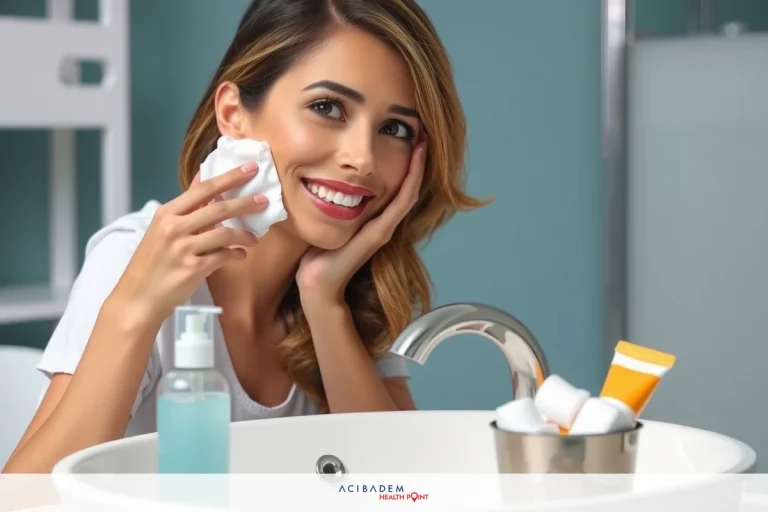How to Remove Blackheads from Nose After Rhinoplasty
How to Remove Blackheads from Nose After Rhinoplasty Rhinoplasty, often gives rise to an unexpected challenge: the emergence of blackheads on the nose. The post-operative period can lead to increased sebum production and keratin buildup in nose pores, creating these unwanted skin blemishes. Complications arise when attempting to remove them; extra care is needed so as not to irritate or damage the healing tissues.
Subsequent sections offer insights into gentle cleansing routines and effective exfoliation techniques specific for this condition. These methods ensure safe removal of blackheads while promoting healthy skin recovery after rhinoplasty. It’s crucial that individuals who have undergone this operation understand how their skincare regimen needs adapting during their recovery phase.
The information also includes recommendations on suitable skincare products that aid in eliminating post-rhinoplasty blackheads without impairing the healing process. By adhering strictly to these tips, recovering patients can maintain radiant skin even after undergoing such a complex operation.
Gentle Cleansing Routine
After rhinoplasty, the nose becomes a sensitive area that requires careful attention. The emergence of blackheads is common due to increased sebum production and keratin buildup in the pores. A gentle cleansing routine can help remove these blemishes without causing irritation or harm to the healing tissues.
Cleansing should ideally be performed twice daily using a mild, non-comedogenic cleanser devoid of harsh chemicals. It’s best to avoid scrubbing; instead, apply light pressure with circular motions enabling effective yet delicate cleaning around your nose. This method ensures removal of impurities without compromising skin integrity.
Incorporating warm water into your skincare routine aids in opening up pores for deeper cleansing. It’s important not to use hot water as it might lead to dryness and possible damage on post-rhinoplasty skin which could disrupt the healing process. Once finished cleansing, gently patting—not rubbing—the face with a soft towel prevents unnecessary friction on sensitive areas.
The inclusion of toner in your routine further enhances this gentle approach towards blackhead removal after rhinoplasty. Toners imbued with natural ingredients like witch
hazel or rosewater provide additional cleansing while soothing inflammation and maintaining healthy pH balance for optimal healing conditions.
Patience is key when dealing with post-operative skincare challenges such as blackheads following rhinoplasty surgery; aggressive approaches may indeed result in more harm than good by irritating or damaging already vulnerable tissue undergoing recovery.
Exfoliation Techniques
The body’s natural process of shedding dead skin cells can be hindered following a rhinoplasty procedure. This disruption could lead to clogged pores, resulting in the formation of blackheads on the nose. To tackle this issue effectively and safely, it is important to employ proper exfoliation techniques that recognize post-operative sensitivities.
Exfoliating products must be chosen carefully. Opt for those without harsh chemicals or large grainy particles that could potentially cause irritation or damage to your healing nose skin. It is also advisable not to over-exfoliate as it may disrupt the balance of your skin and delay recovery.

1. Gentle Facial Scrubs: These are specially formulated with tiny granules that help remove dead skin cells from the surface of your face gently, including around your nose area.
2. Chemical Exfoliants: Products containing mild acids such as salicylic acid or lactic acid can help unclog pores by breaking down dirt, sebum, and keratin buildup – common culprits behind blackhead formation.
3. Enzyme-based Exfoliators: Enzymes found in fruits like papaya and pineapple have proven beneficial effects on skincare; they dissolve dead skin cell bonds making them easier to wash off.
4. Microfiber Cloths: When used with warm water (not hot), these cloths provide gentle physical exfoliation which can aid effective removal of blackheads post- rhinoplasty.
Moderation is key when incorporating these techniques into your routine after rhinoplasty surgery; too much exfoliation might lead to sensitivity issues and dryness which further complicate skincare management during recovery from nasal surgery.
By applying these measured methods appropriately alongside other recommended skincare practices post-rhinoplasty—such as gentle cleansing—you ensure maintaining healthy-looking skin while keeping irritations at bay during an otherwise stressful recovery period.
Effective Skincare Products
The quest to restore healthy, clear skin and remove blackheads following rhinoplasty requires more than just good cleansing habits or exfoliation techniques. The selection of effective skincare products plays a role in maintaining the health of post-operative skin. These products should not only aid in blackhead removal but also support healing and nourishment.
Moisturizers with hyaluronic acid can keep your nose skin hydrated without clogging pores, reducing chances of blackhead formation. Sunscreens are indispensable too; they protect sensitive post-rhinoplasty skin from harmful UV rays that can cause inflammation or hyperpigmentation. Opt for sunscreens that offer broad-spectrum protection with SPF 30 or higher.
Products containing retinoids help regulate sebum production which often increases after nasal surgery contributing to the onset of blackheads. However, it’s critical to note that retinoid usage may lead to dryness initially; hence, gradual introduction into your routine is suggested while keeping hydration levels optimal using a suitable moisturizer.
Topical treatments such as salicylic acid serums penetrate deep into pores breaking down excess sebum and dead skin cells – factors leading up to blackhead formation on the nose post-rhinoplasty. Antioxidant-rich formulations like Vitamin C serums promote healing while brightening complexion providing added benefit especially during recovery phase when patients frequently report dull-looking skin.
Consider incorporating natural ingredients like tea tree oil known for its antibacterial properties helping prevent breakouts and reduce inflammation hence beneficial in maintaining clear noses after rhinoplasty procedures.
By tailoring product choices according to individual needs considering ingredient efficacy and safety profiles one ensures taking an informed approach towards managing skincare challenges during recovery period following rhinoplasty surgery—thereby promoting healthy-looking radiant complexions even under challenging circumstances.
Frequently Asked Questions
How soon after rhinoplasty can I start my skincare routine?
It is recommended to consult with your surgeon before starting any new skincare regimen post-rhinoplasty. Typically, patients are advised to wait until all dressings and splints are removed, which usually occurs about a week after the procedure.
Can I use my regular skincare products post-rhinoplasty?
After rhinoplasty, skin sensitivity might change temporarily due to surgical intervention. You should be cautious when reintroducing your regular products and consider using gentler alternatives initially while monitoring how your skin reacts.
Is it safe to exfoliate my nose after rhinoplasty?
Gentle exfoliation using non-abrasive ingredients can help unclog pores and prevent blackhead formation on the nose after rhinoplasty. Aggressive scrubbing or harsh chemical exfoliants may irritate healing tissues; hence caution is advised.
What if I still have blackheads despite following these tips?
If blackheads persist even after implementing these strategies into your post-rhinoplasty skincare routine, consider seeking professional advice from a dermatologist for more targeted treatment options.











